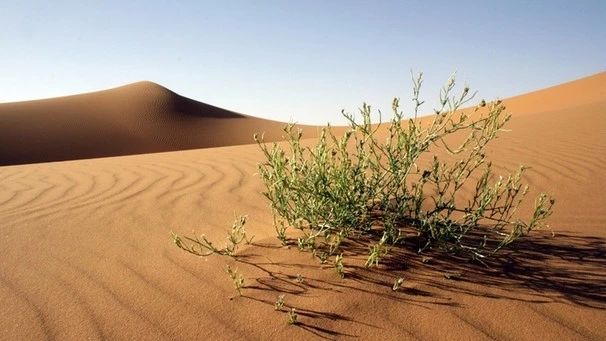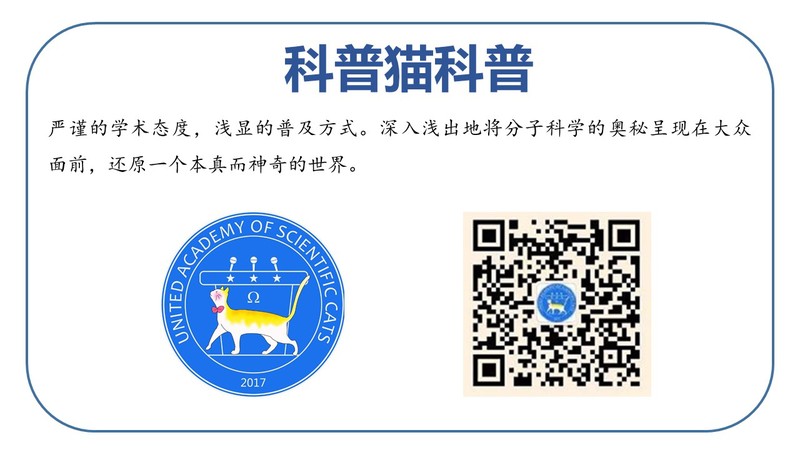一些生活在沙漠中的动植物,能够依靠独特的身体结构吸收空气中的水分。现在,人类也可以实现从空气中取水了。科学家们研发了一种能从空气中收集水并实现运输储存的新材料。
关键词:科普、译文、空中取水
Humans can get by in the most basic of shelters, can scratch together a meal from the most humble of ingredients. But we can't survive without clean water. And in places where water is scarce-the world's deserts, for example-getting water to people requires feats of engineering and irrigation that can be cumbersome and expensive.
人类可以在最基本的居所生活,可以从最简陋的食材中拼凑出一顿饭。但没有干净的水,我们就无法生存。在缺水的地方 - 例如世界的沙漠 - 向人们提供水资源需要高超的工程技术和灌溉技术,而这些技术既繁琐又昂贵。

A pair of new studies from researchers at The Ohio State University offers a possible solution, inspired by nature.
来自俄亥俄州立大学的研究人员的两项新研究提供了一种可能的解决方案,灵感来自大自然。
'We thought: 'How can we gather water from the ambient air around us?'' said Bharat Bhushan, Ohio Eminent Scholar and Howard D. Winbigler Professor of mechanical engineering at Ohio State. 'And so, we looked to the things in nature that already do that: the cactus, the beetle, desert grasses.'
'我们想:'我们如何从周围的空气中收集水呢?''俄亥俄州著名学者Bharat Bhushan和俄亥俄州立大学机械工程教授Howard D. Winbigler说道。'所以,我们关注自然界中已经做到这一点的东西:仙人掌、甲虫、沙漠草。'
Their findings were published Dec. 24 in the journal Philosophical Transactions of the Royal Society. The works were co-authored with Ohio State Ph.D. student Dev Gurera and with Ohio State engineering researcher Dong Song.
他们的研究结果发表在12月24日的《皇家学会哲学会刊》上。这些作品是与俄亥俄州立大学博士Dev Gurera和俄亥俄州立工程研究员Dong Song合著。
Bhushan's work focuses on finding nature-inspired solutions to societal problems. In this case, his research team looked to the desert to find life that survives despite limited access to water.
Bhushan的工作重点是寻找自然启发的解决方案来解决社会问题。在这个案例中,他的研究小组在沙漠中寻找尽管水源有限但仍能生存的生命。

The cactus, beetle and desert grasses all collect water condensed from nighttime fog, gathering droplets from the air and filtering them to roots or reservoirs, providing enough hydration to survive.
仙人掌,甲虫和沙漠草都能收集夜间雾中凝结的水,从空气中收集水滴,并将其过滤到根部或储水层中,提供足够的水分维持生命。
Drops of water collect on wax-free, water-repellant bumps on a beetle's back, then slide toward the beetle's mouth on the flat surface between the bumps. Desert grasses collect water at their tips, then channel the water toward their root systems via channels in each blade. A cactus collects water on its barbed tips before guiding droplets down conical spines to the base of the plant.
水滴聚集在甲虫背上不含蜡的防水凸起上,然后在凸起物之间的平坦表面滑向甲虫的嘴巴。沙漠草在它们的顶端收集水分,将水分输送到根部。仙人掌在带刺的顶端收集水分,然后引导水滴沿着圆锥形的刺滴到植物的底部。
Bhushan's team studied each of these living things and realized they could build a similar-albeit larger-system to allow humans to pull water from nighttime fog or condensation.
Bhushan的团队研究了每一种生物,并意识到他们可以构建一个类似的 - 虽然更大的系统 - 让人类从夜间的雾或冷凝中提取水。
They started studying the ways by which different surfaces might collect water, and which surfaces might be the most efficient. Using 3-D printers, they built surfaces with bumps and barbs, then created enclosed, foggy environments using a commercial humidifier to see which system gathered the most water.
他们开始研究不同表面可能收集水的方式,以及哪些表面可能是最有效的。使用3D打印机制造出带有凸起和倒钩的表面,然后用商用加湿器制造出封闭、雾化的环境,以观察哪个系统收集了最多的水。
They learned that conical shapes gather more water than do cylindrical shapes-'which made sense, given what we know about the cactus,' Bhushan said. The reason that happens, he said, is because of a physics phenomenon called the Laplace pressure gradient. Water gathers at the tip of the cone, then flows down the cone's slope to the bottom, where a reservoir is waiting.
他们发现,圆锥形比圆柱形能收集更多的水分 -'考虑到我们对仙人掌的了解,这是有意义的,'Bhushan说。他说,之所以发生这种情况,是因为一种被称为拉普拉斯压力梯度的物理现象。水在圆锥的顶端聚集,然后沿着圆锥的斜坡流到底部,那里有一个蓄水池在等着。
Grooved surfaces moved water more quickly than ungrooved surfaces-'which seems obvious in retrospect, because of what we know about grass,' Bhushan said. In the research team's experiments, grooved surfaces gathered about twice as much water as ungrooved surfaces.
水在沟槽状的表面比非沟槽状的表面移动更快 - '回想起来,这似乎很明显,因为我们对草的了解,'Bhushan说。在研究小组的实验中,沟槽表面聚集的水量是未开槽表面的两倍。
The materials the cones were made out of mattered, too. Hydrophobic surfaces-those that allowed water to bead up rather than absorbing it-gathered the most water.
锥体的材料也很重要。疏水表面 - 那些允许水聚集而不是吸收的表 - 聚集了大部分的水。
'The beetle's surface material is heterogeneous, with hydrophilic spots surrounded by hydrophobic regions, which allows water to flow more easily to the beetle's mouth,' Bhushan explained.
'甲虫的表面物质是不均匀的,亲水性斑点被疏水性区域包围,这使得水更容易流到甲虫的嘴里,'Bhushan解释说。
The research team also experimented on a structure that included multiple cones, and learned that more water accumulated when water droplets could coalesce between cones that were one or two millimeters apart. The team is continuing those experiments, Bhushan said.
研究小组还对一种包括多个锥细胞的结构进行了实验,他们发现,当水滴在相距1或2毫米的锥体之间聚结时,会积聚更多的水。 Bhushan说,研究小组正在继续这些实验。
The work so far has been done on a laboratory-only level, but Bhushan envisions the work scaled up, with structures in the desert that could gather water from fog or condensation. That water, he thinks, could supplement water from public systems or wells, either on a house-by-house basis, or on a community-wide basis.
到目前为止,这项工作仅在实验室层面进行,但Bhushan认为这项工作将扩大规模,沙漠中的结构可以从雾或凝结水中收集水分。他认为,这些水可以补充来自公共系统或水井的水,可以是逐户供水,也可以是全社区供水。
There is precedent for the idea: In areas around the world, including the Atacama Desert in Chile, large nets capture water from fog and collect it in reservoirs for farmers and others to use. Those nets might not be the most efficient way of harnessing water from the air, Bhushan believes.
这个想法有先例可循:在世界各地,包括智利的阿塔卡马沙漠,大型的网从雾中收集水,并将其收集在水库中供农民和其他人使用。Bhushan认为,这些网可能不是最有效的利用空气中的水的方法。
'Water supply is a critically important issue, especially for people of the most arid parts of the world,' Bhushan said. 'By using bio-inspired technologies, we can help address the challenge of providing clean water to people around the globe, in as efficient a way as possible.'
'供水是一个至关重要的问题,特别是对世界上最干旱地区的人们来说,'Bhushan说。 '通过使用生物启发技术,我们可以帮助解决为全球人民提供清洁水的挑战,以尽可能有效的方式。'
Explore further: Inspired by a desert beetle, cactus and pitcher plant, researchers design a new material to collect water droplets
进一步探索:受到沙漠甲虫,仙人掌和猪笼草的启发,研究人员设计了一种收集水滴的新材料。
(责任编辑:周姚)

